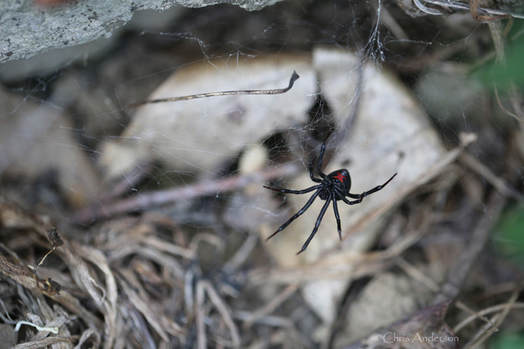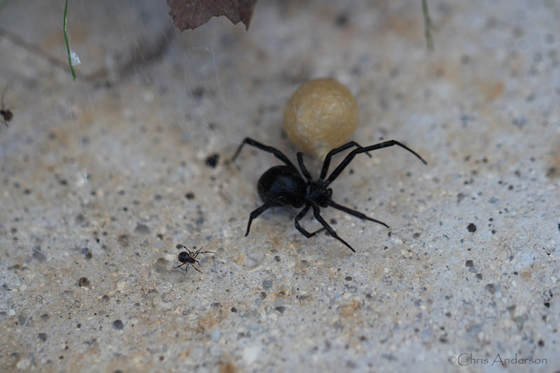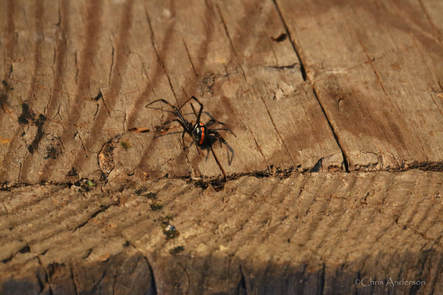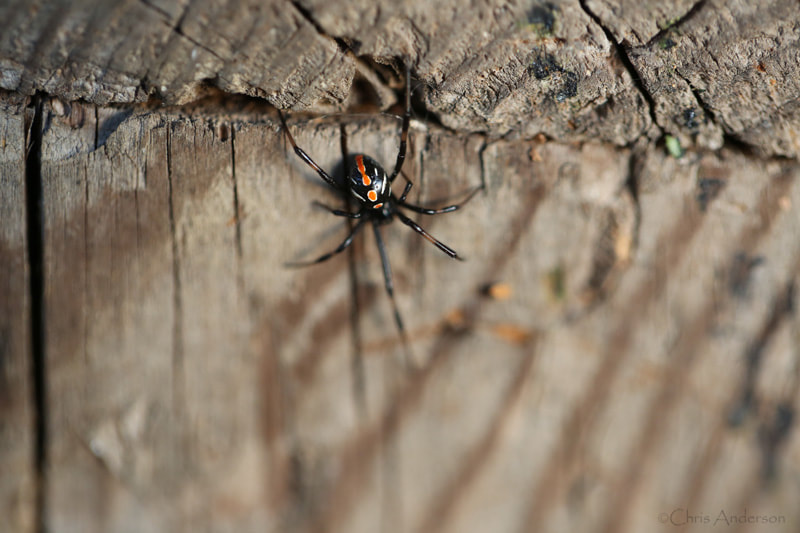|
A lot of people get creeped out by spiders. Some deep instinct directs us to react with surprise and pay attention when we see small, fast and erratically scooting creatures. Spiders are unnerving to some as they are the little solitary beings that dwell in dark corners, immobilize and consume their food while it is still living and sometimes attack and eat each other. Fortunately, as naturalists, we realize spiders have great value in the ecosystem and when found indoors, we tend to reach for a container to escort them outside rather than immediately grab the insecticidal spray. The vast majority of spiders in Virginia are completely harmless but black widows (Latrodectus mactans) are one species to treat with caution. Fortunately, they are shy and just want to be left alone. They tend to bite when mashed or squeezed but otherwise they want to live their quiet lives in webs created in rock walls, cement blocks, wood piles and other protected areas. They are very easy to recognize, particularly the larger females with her shiny jet-black body and very long legs. To aid in identification, they have a signature red or orange hour glass symbol on their abdomen and tend to hang out upside down in their webs, warning others to not eat them – a warning heeded by most predators except for birds and preying mantis who relish them as a snack. The male black widow is about half the size of the female, brown or gray with lighter stripes across his body. He does not pose health problems to humans since he doesn’t bite. The widows get their name from the occasional practice of the female devouring the male after mating.
The female creates a light tan, round egg mass which contains up to 400 babies. The young tend to hatch at the same time so they will be about the same size, preventing older, bigger spiderlings from eating their smaller brothers and sisters. Prevention is the best way to not get bitten – wear gloves and don’t stick your hand in places you can’t see or check first. If bitten by a black widow, seek medical attention immediately. Death is not likely but swelling at the bite site, severe muscle aches, dizziness, sweating, headache, anxiety and nausea may result. As with most things, a healthy respect allows for acceptable cohabitation as long as the black widows stay outside in areas not frequented by humans, particularly kids and elders. If found indoors, the choice of whether to escort outside (very carefully with proper protection) or to spray is up to the individual. Fortunately, black widows do not jump.
1 Comment
9/20/2023 05:28:32 am
I think my blog also got a kinda cool comment form. A very nice.
Reply
Your comment will be posted after it is approved.
Leave a Reply. |
Have a blog or blog idea?
Let us know (click) Other Blogs
VA Native Plant Society - click Brenda Clement Jones - click John Muir Laws' Blog - click Megan's Nature Nook - click Categories
All
Archives
September 2023
Blog Administrator:
Kathleen A. VMN since 2018 |



